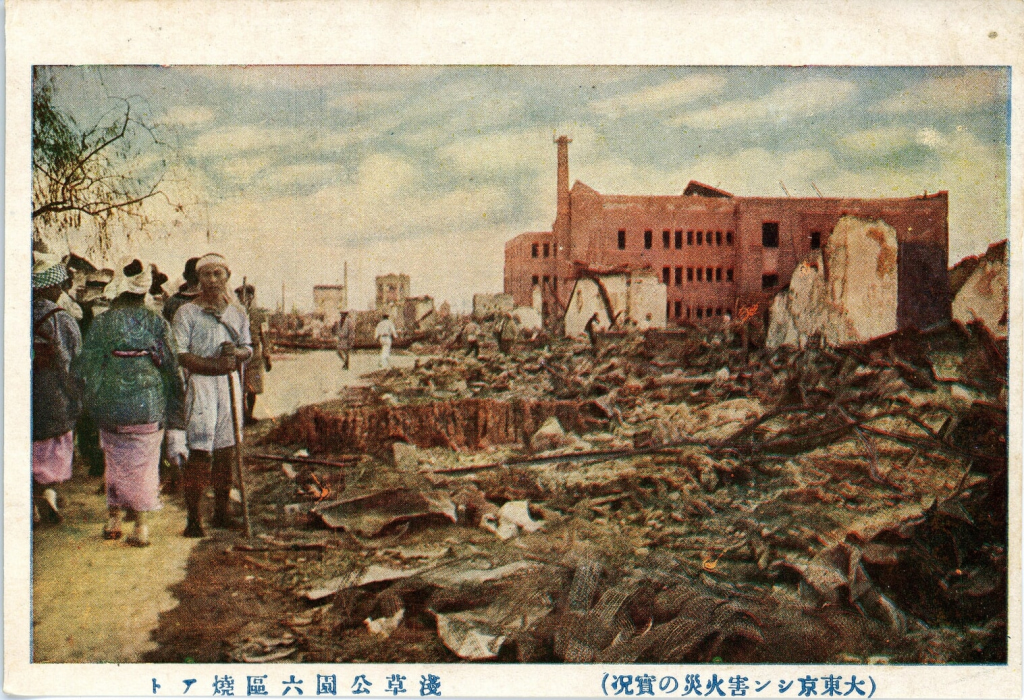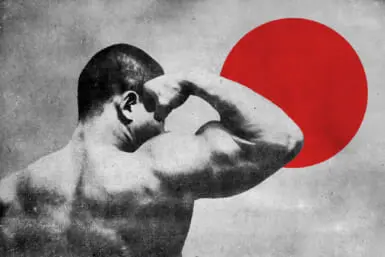This September marks the 99th year since the Great Kanto Earthquake, which remains one of Japan’s most devastating natural disasters. Followed by destructive fires and towering waves from the tsunami, this tragedy led to over 100,000 deaths and urban destruction. Since then, Tokyo has built itself back up, experiencing tremendous changes in many aspects including social, political and urban development.
There are many historical sources through which we can look at the Great Kanto Earthquake, including postcards. Unlike the postcards of today depicting beautiful tourist spots these were prints depicting ruins, dead bodies and people walking through rubble.
Just a few days after a large earthquake brought the city scenery tumbling down, the streets were lined up with around 300 vendors of these postcards. A question comes to mind as to how imagery of catastrophe became so sought out by the public and what the circulation of such photographs meant at that time.
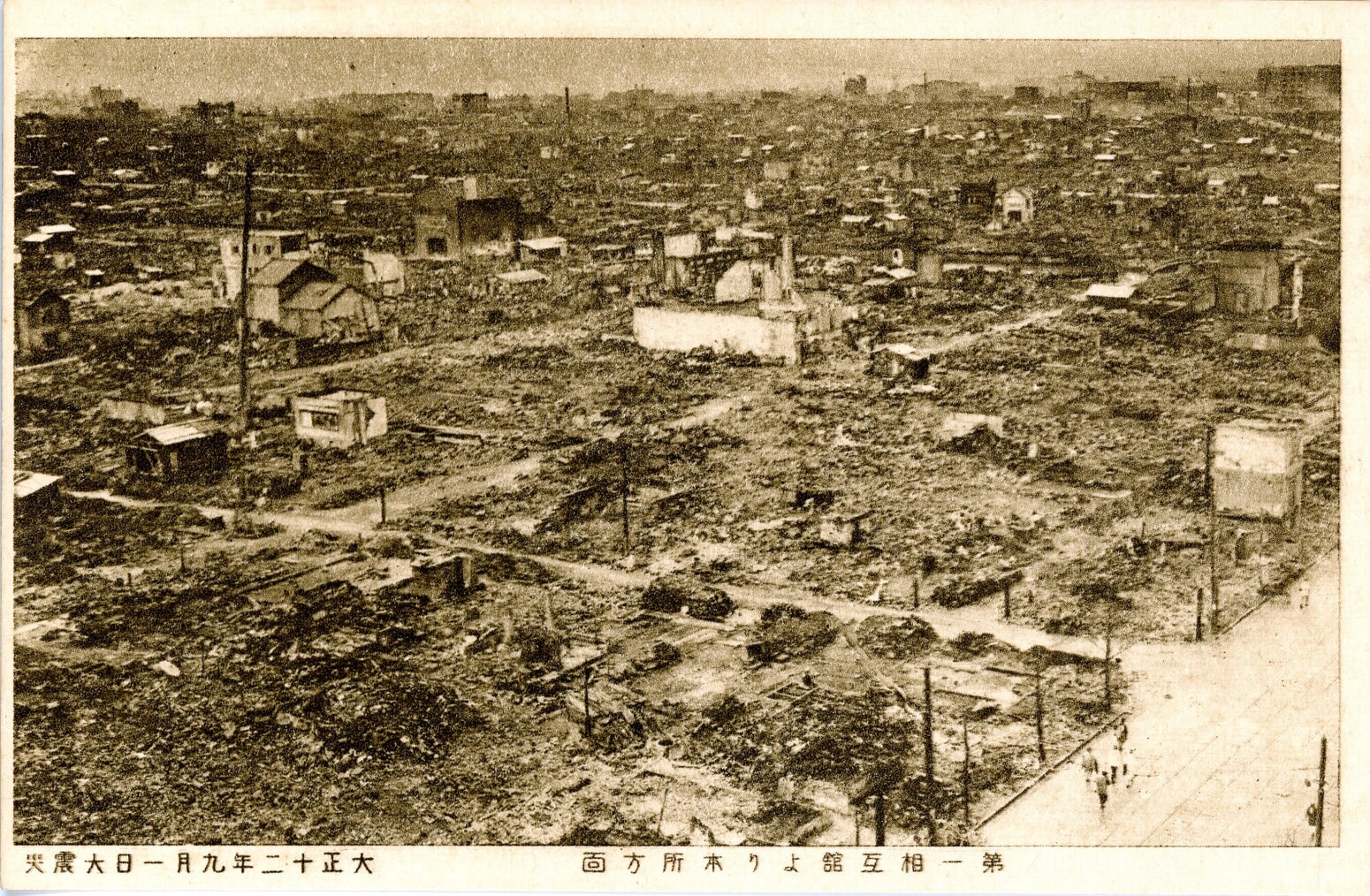
Honjo Area from the Dai-ichi Mutual Life Insurance Company Building. Photograph courtesy of the Main Library, Kyoto University.
The Postcard Boom of the Early 1900s
During wartime, postcards were a popular mode of communication. The small writing space on one side, accompanied by pictures on the other, made postcards a compact and convenient way of notifying loved ones of the sender’s location and well-being. The popularity of postcards continued after the Russo-Japanese War. Post-war postcards depicted scenes of the war and were kept as memorabilia.
More similar to aesthetically pleasing postcards as we know and love them today though were the bijin ehagaki, meaning “postcards of beauties.” With portraits of geisha and movie actresses, women on postcards were the 20th century equivalent of today’s idols. The growth of the printing press industry after the war gave birth to the postcard boom in early 20th century Japan, increasing the utility of the postcard as not simply a communication tool but as something commemorative and aesthetic as well.
How The Great Kanto Earthquake Postcards Came to Be
A 7.9 magnitude earthquake could not hinder the postcard trend. On the contrary, it created more demand. The aftermath of the Great Kanto Earthquake became a popular subject matter for postcards at that time. Black and white photographs of Tokyo residents seeking refuge, as well as aerial views of destroyed buildings were common.
These postcards were not produced for aesthetics but as a major tool for the spread of information. Seeing how newspaper companies were left with their offices in shambles, postcard publishers tried to fill the gap. A very small number of publishing companies were fortunate enough to survive, one of them being Mitsumura Printing, which took advantage of its remaining resources to churn out postcards.
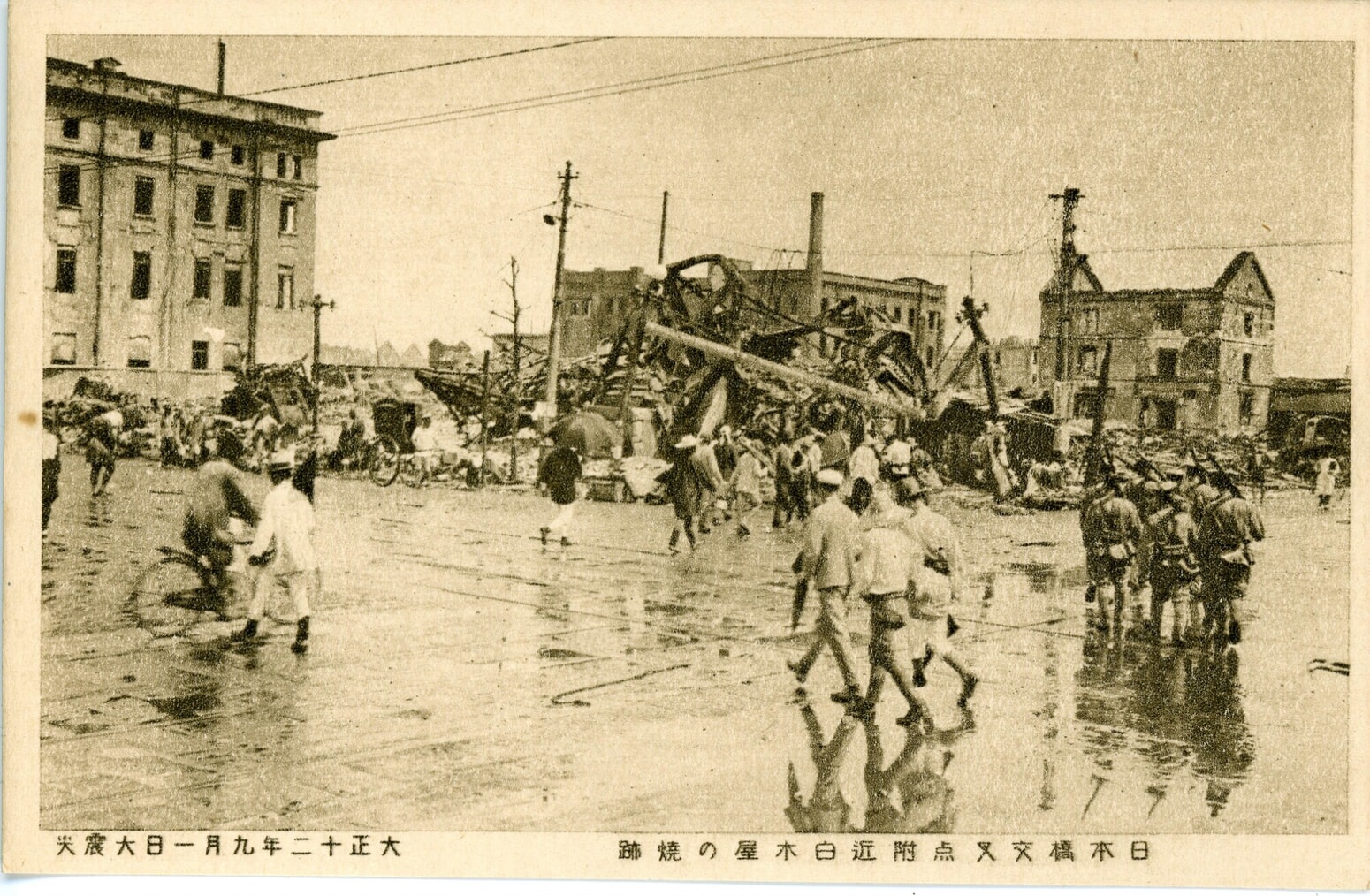
The Wreckage of Shirokiya Near the Nihonbashi Intersection. Photograph courtesy of the Main Library, Kyoto University.
Although primarily printed to spread information, The Great Kanto Earthquake postcards had a problematic side too. In some cases, they transcended communication and the subject matter was sensationalized.
Photographs showing the devastation of the earthquake became sought after by publishers and the public alike. Huckster photographers and postcard publishers rushed to take photographs of various scenes and made a considerable amount of profit by selling images of the tragedy. Official prohibition against showing figures of dead bodies was ignored by postcard sellers and prints exposing gruesome body horror still exist even today.
Creating Collective Memory
The demand for postcards depicting scenes from the earthquake was not only sensationalist. Part of it was driven by the honest need for memorialization. These postcards also contributed to nation-building. During a period when radios weren’t widespread and print media was halted, postcards and photographs were de facto a primary medium for information.
The postcards conveyed not only the condition of the city, but the grieving of the people as well. Seeing images of families standing next to their burned homes evoked a sense of emotional resonance for the viewers.
The circulation of postcards depicting the distress of the city and its people resulted in a collective experience. Although the earthquake struck only one side of the country, the visual experience through these postcards spread the feeling of empathy across the nation.
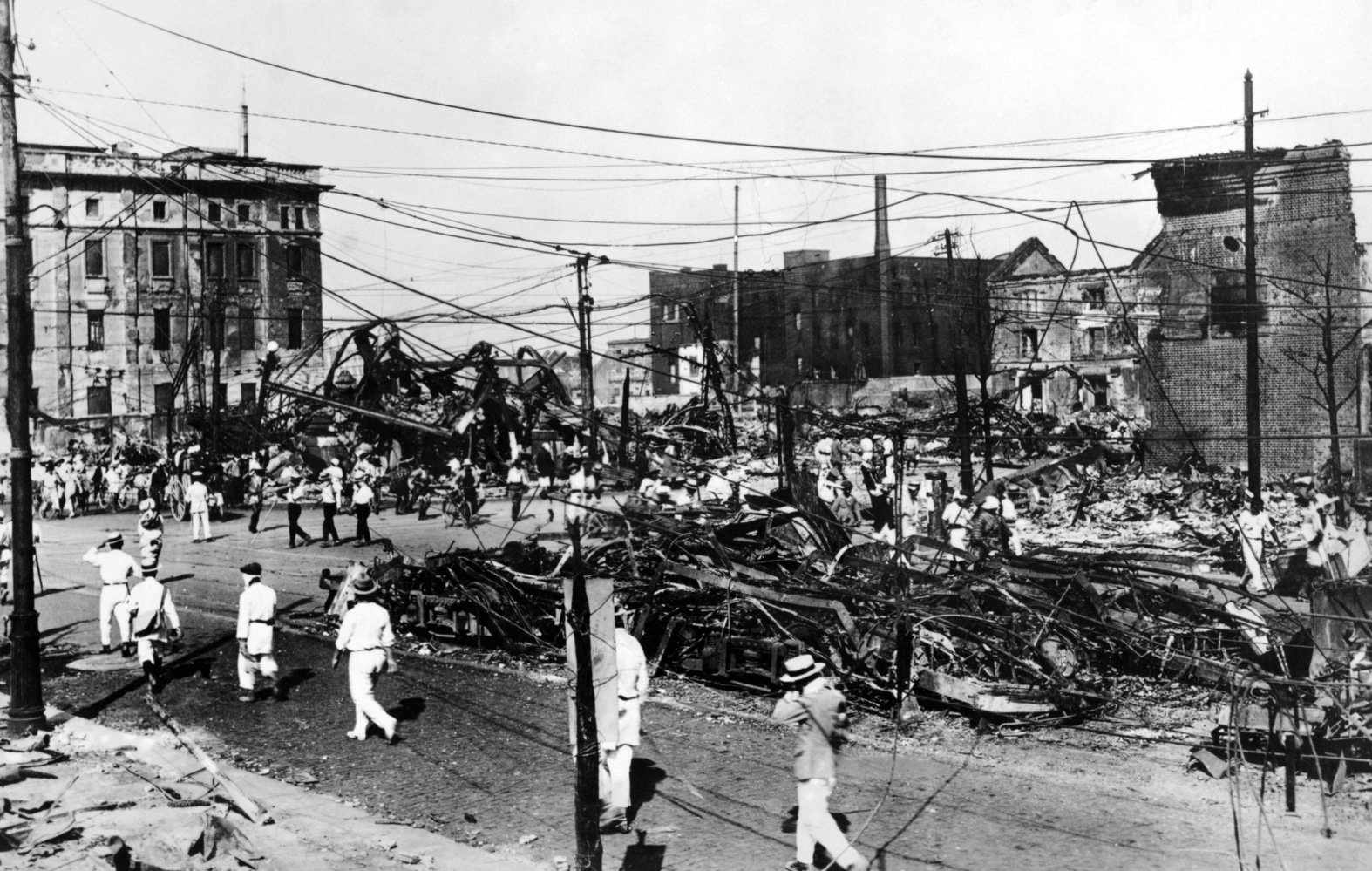
Ruins of burned streetcars after the 1923 Tokyo earthquake The Great Kanto Earthquake.
Postcard Culture Today
Nearly a century later, postcards have lost their grip as a popular communication and information tool. We now have smartphones to fulfill those functions — a convenient and quick alternative. But that does not mean that postcards have lost their charm altogether. Today, postcards have become souvenirs, a way for us to remember our visit to tourist spots or art museums.
Despite the changing function of postcards throughout history, one thing that remains constant is their ability to help us remember.
Featured image courtesy of the Main Library, Kyoto University: “Great Kanto Earthquake: The Wreckage of Asakusa Park Sixth Ward.”

